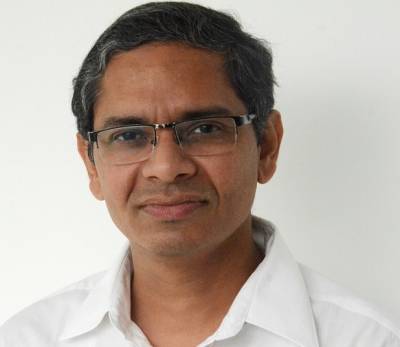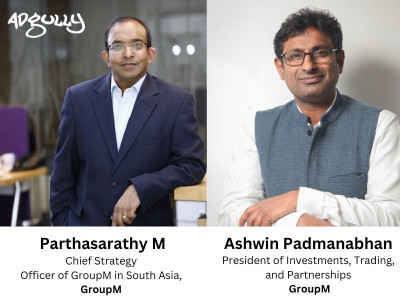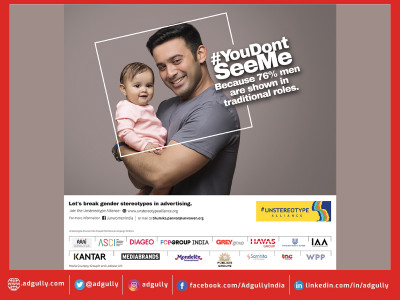Indian brands, investing in building equity: Millward Brown's Basu
Millward Brown, WPP’s specialist marketing and brand consultancy recently released BrandZ Indian Top 50 brands study. The valuation combines rigorously analysed financial data from Bloomberg and Kantar Worldpanel with the opinions of more than 50,000 Indian consumers, gathered for over 600 brands in 50+ categories.
Millward Brown South Asia is spearheaded by Prasun Basu. Prasun has more than 20 years of experience in market research space and has worked with IMRB International, Nielsen and The Gallup Organization at senior level positions in past. He has been the Millward Brown for more than 15 years and is currently the Managing Director, South Asia.
Adgully discussed the finer points of survey, the factors that lead to brand excellence and unique nuances of Indian market.
Adgully: Why did you consider it necessary to marry financial data with consumer driven brand equity management?
Prasun Basu: These are both very important facets of trying to get to a financial brand value. The intangible assets that sit in a corporation attributed to the brand are very important because that is the financial measure of the brand. At the same time, the heart of the brand in terms of its future success sits with how strongly well does it connect with the consumer...what loyalty does it have with the consumers. Will consumer buy it or buy it more depends on the consumer. If brands are only doing well because of their pricing, infrastructure, then in the long term they won’t do so well because consumer connect won’t be there. Hence financial side of the intangible assets of the brand and its consumer connect both are critical. If we lose any one part of it, then we lose a part of the brand value. Hence we follow this methodology across the globe.
AG: In Indian context, does financial data not become a stumbling block in the case of companies which are not Ltd companies?
PB: There will always be situations where companies’ and brands’ data point will be excluded because they don’t have the data. The Indian market is full of Indian origin brands. A lot of them are publically traded. Then there are MNC brands. So we have a lot to go with. Though it doesn’t cover every big brand in the market but that is fine.
AG: Is brand recall always in proportion to brand value?
PB: No, it is certainly not. That is an important point to keep in mind that when brands are building strong equity, they might have strong brand recall but they might not be doing a good job at converting that recall into sales etc. On the other hand, there could be brands which are selling upscale but do not have enough brand equity and recall value so the balancing act is very important.
AG: What are the key similarities between the top ten brands?
PB: I think the top 10 brands, mostly speaking, have a very clear purpose for why they exist. They are well trusted by the consumers. Some of them have a unique differential positioning with the consumers. Usually positioning that is beyond the functional positioning. Most of them are investing a lot behind their brands, their media spends are high and that is helping them. Many of them are experimenting with the new media, digital media and mobile. They are challenging themselves with bold advertising.
AG: Aren't some sectors privileged to a higher consumer driven brand equity than others say auto and personal care products?
PB: Some sectors have bigger brand equity play and the role of brand equity is bigger in some sectors but having said that, even the state owned enterprises are investing behind brand equity. Those are the kind of examples where brand equity hasn’t played such a big role in the past. It has been more about infrastructure, sales and distribution that has created the success but now those companies are realizing the brand equity value and investing a lot behind it.
AG: Do you see vast difference in consumer preferences across geographies, for example north and south India? Is it factored into the study?
PB: To answer the first question, yes we do. We do studies across the country in eight different cities. They are spread across north, south, east, west, large towns and small towns. Differences are surely there and we have learnt a lot about them. There are clusters of markets which are similar and clusters which are different. We have a huge database which actually mines this data.
AG: How do you find Indian market different vis-à-vis other markets where you have a presence?
PB: Indian market is going through a very vast change, faster than many of the other markets. Second it is a market where there is a very strong play of global MNC brands and local Indian brands. This kind of competing nature is not as strong in the other markets. In most of the other markets, either the global MNC’s are really strong or the local brands are really strong. In India you have large number of brands from both sides.
AG: How do you see Indian brands performing vis-à-vis multinational brands? Or, is there no such criteria?
PB: Indian brands are doing extremely well. They are growing in size, stature and value. They are investing in building equity and they are very successful in that. Lots of examples are there like SBI, Maruti, MRF, Tanishq, Asian paints. At the same time, MNC brands have done very well. They have been around in India for 50- 100 years. In India they both co-exist.
AG: If we talk of a brand, that has faced tough times due to a controversy, what are its chances of bouncing back?
PB: Very high if they are strong brands. Maggi has been a powerful brand in India. It is a single most reason why I feel it will bounce back.
AG: Lastly, in your view, what role does social media play in enhancing a brand’s image?
PB: Large role today, because social media has a multiplier effect. They become a word of mouth vehicle to the brand and whether it is positive or negative they have a viral effect which plays a very big role. So, social media plays an important role in brand management. ANUKRITI(AT)ADGULLY.COM

















Share
Facebook
YouTube
Tweet
Twitter
LinkedIn